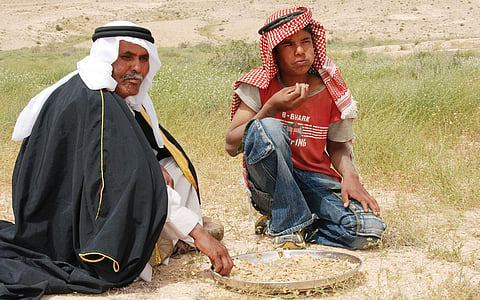

In 2022, 2.8 billion people globally were unable to afford a healthy diet. Of these 151.3 million resided in the Arab States, representing 5.4 per cent of the global population.
The 151.3 million people constitute almost one-third of the Arab region’s population, according to a report by the United Nations.
The report, titled 2024 Near East and North Africa Regional Overview of Food Security and Nutrition, was launched on December 18, 2024, by the Food and Agriculture Organization (FAO), the International Fund for Agriculture Development (IFAD), the United Nations Children’s Fund (UNICEF), the World Food Programme (WFP), the World Health Organization (WHO), and the United Nations Economic and Social Commission for Western Asia (ESCWA).
The analysis covers 22 Arab states spread across West Asia, North and East Africa: Algeria, Bahrain, Comoros, Djibouti, Egypt, Iraq, Jordan, Kuwait, Lebanon, Libya, Mauritania, Morocco, Oman, Palestine, Qatar, Saudi Arabia, Somalia, Sudan, Syrian Arab Republic, Tunisia, United Arab Emirates and Yemen.
The Arab region remains off-track to meet the food security and nutrition targets of the Sustainable Development Goals (SDGs) by 2030, the document warned.
Conflict is the main driver of food insecurity and malnutrition in the region, while economic challenges, high income disparities and severe climate impacts also play important roles in this matter, according to the report.
Regional food production is limited due to scarcity of fertile land and water, impacts of climate variability and the increased frequency of extreme weather events.
The prevalence of undernourishment in Arab states reached a new level, as per the report. A shocking 66.1 million people, equivalent to about 14 per cent of the region’s population, faced hunger in 2023.
In 2023, moderate or severe food insecurity affected 39.4 per cent of the Arab population (186.5 million individuals), a 1.1 percentage point increase from the previous year, and 15.4 per cent of the population (72.7 million people) faced severe food insecurity in 2023.
The Arab region continues to struggle with a triple burden of malnutrition — undernutrition, micronutrient deficiencies (anemia among women) and obesity.
In 2022, the prevalence of overweight among children under 5 years of age and among adults over 18 years was around double the world average. Egypt, Qatar, and Kuwait reported the highest country-specific obesity rates.
Although progress has been made in decreasing stunting rates from 28.0 per cent in 2000 to 19.9 per cent in 2022, achieving nutrition targets in the Arab region remains a challenge. The prevalence of wasting in children also exceeded the global average, with low-income countries experiencing the highest rates.
The prevalence of anaemia among women aged 15 to 49 stood at 33.2 per cent in 2019, higher than the global average.
The report emphasised the need to transform and strengthen agrifood systems, address inequalities and ensure that healthy diets are affordable and accessible to all.
The analysis called for increased and more cost-effective financing. It recommended innovative financing mechanisms — such as capital guarantees, results-based financing, climate financing, debt swaps, advanced market commitments, and innovation incubators — to bridge the funding gap.
UN agencies assert that the report’s findings will trigger new momentum for agrifood systems transformation in the Arab region, creating more efficient, inclusive, resilient, and sustainable agrifood systems for people and the planet.
Building on the findings of the report, the UN agencies issued the Cairo Declaration on Financing Agrifood Systems Transformation in the Near East and North Africa Region during launch event.
In this declaration, they affirmed their commitment to deepen collaboration among themselves and with international and regional development banks, the private sector, and national governments.
This collaborative effort aims to develop, scale up, and deploy additional financial resources to support the transformation of regional agrifood systems to achieve food security and nutrition.